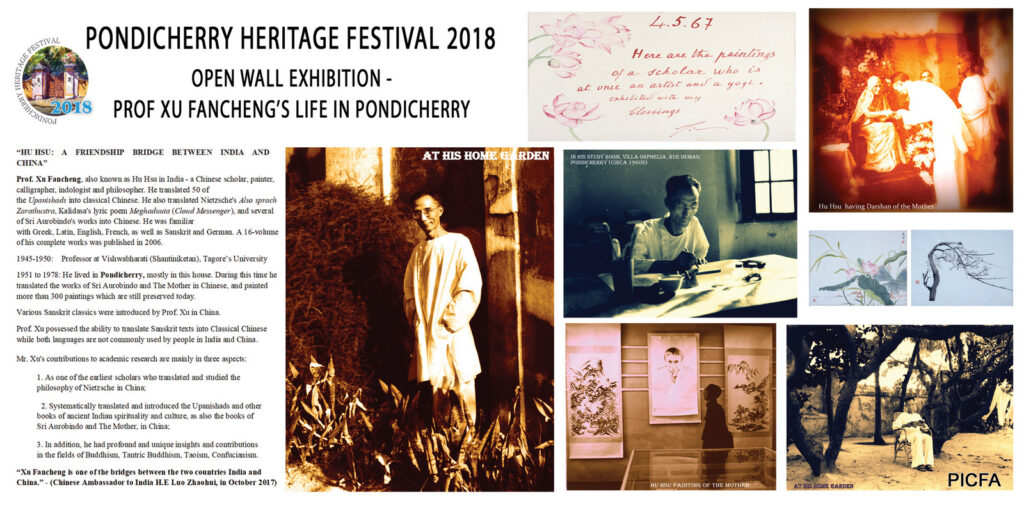Bridging East and West: “Open Wall Exhibition” Celebrates Prof. Xu Fancheng’s Life in Pondicherry
During the 2018 Pondicherry Heritage Festival,(January 18- February 18) an extraordinary exhibition titled “Open Wall” opened its doors, not just to showcase artwork, but to illuminate the life and legacy of a remarkable man named Prof. Xu Fancheng. Known as Hu Hsu in India, he was a cultural emissary who built bridges of understanding between the ancient civilizations of China and India.
As Chinese Ambassador to India Luo Zhaohui stated in 2017, “Xu Fancheng is one of the bridges between the two countries, India and China.” This exhibition became a testament to the truth of that statement.

A Scholar of Many Hats:
Professor Xu wasn’t just one thing; he was a symphony of roles. A scholar, painter, calligrapher, indologist, and philosopher, his intellect ranged across disciplines and languages. He mastered not just Chinese, but Greek, Latin, English, French, Sanskrit, and German. This linguistic prowess allowed him to delve into the heart of Indian knowledge and translate them into a form accessible to his fellow Chinese.
His achievements were monumental. Imagine him, sitting in his modest Pondicherry home, breathing life into 50 Upanishads in classical Chinese. He introduced Nietzsche’s “Thus Spoke Zarathustra,” Kalidasa’s “Meghaduuta,” and even Sri Aurobindo’s works to China. The sheer scope of his translations is breathtaking, revealing his dedication to cultural exchange.
A Life in Pondicherry:
From 1951 to 1978, Pondicherry became Xu’s sanctuary. In this charming French colonial town, he embraced the vibrant Indian spirit. He immersed himself in the spiritual teachings of Sri Aurobindo and The Mother, translating their words into Chinese and further enriching the tapestry of Chinese scholarship. He also produced over 300 paintings, each stroke a testament to his artistic soul.
Bridging the Gap:
But Professor Xu’s legacy goes beyond translations and paintings. He possessed the rare ability to navigate seemingly disparate worlds. He could translate Sanskrit texts into classical Chinese, two languages rarely spoken by their respective peoples. This ability wasn’t just linguistic; it was a deep understanding of both cultures, their philosophies, and their nuances.
His contributions to scholarship can be categorized into three pillars:
- Pioneer of Nietzsche in China: He was one of the first scholars to introduce and translate Nietzsche’s groundbreaking philosophies to China.
- Unveiling Indian Wisdom: He systematically translated the Upanishads and other treasures of ancient Indian spirituality, making them accessible to Chinese readers.
- A Holistic Approach: His profound insights extended beyond single disciplines, offering unique perspectives on Buddhism, Tantric Buddhism, Taoism, and Confucianism.
The “Open Wall” exhibition wasn’t just a display of works; it was a celebration of a life devoted to understanding and sharing. Professor Xu Fancheng, the man who built bridges with words and colors, continues to inspire generations to explore the rich tapestry of cultures that lie across borders. This exhibition served as a powerful reminder that intellectual curiosity and empathy can break down walls and build bridges of understanding.
